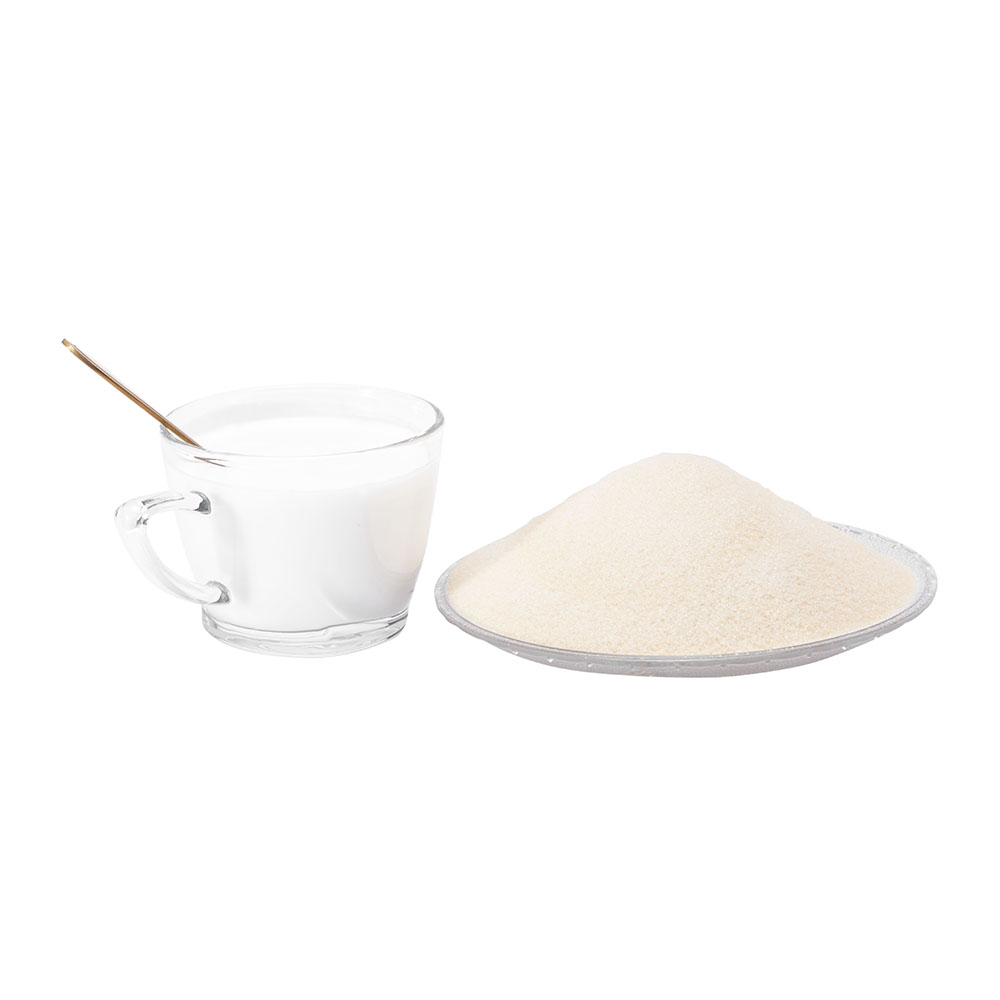As we all know, yogurt is commonly used as food additives, and gelatin is one of them.
Gelatin is derived from collagen protein widely found in animal skin, tendons and bones. It is a hydrolyzed protein from collagen in animal connective tissue or epidermal tissue. After animal skin or bone is treated, gelatin, the hydrolyzed product of collagen, can be obtained. In other words, collagen is transformed into water-soluble product after partial fracture of intermolecular bonds due to irreversible heating hydrolysis reaction.
The difference in isoelectric point between type A gelatin and type B gelatin is due to the difference in the number of acidic and alkaline amino acids in the gelatin due to the different acid-based treatment. With the same jelly strength, type B gelatin has A higher viscosity than Type A gelatin. Gelatin is insoluble in cold water, but can absorb water and swell up to 5-10 times. Gelatin increases in granularity and decrease in water absorption capacity. Gelatin become gelatin solution after heating temperature exceeds the melting point of gelatin, and gelatin become jelly after cooling.
As a food additive, edible gelatin is widely used in the production of yogurt. Gelatin is a good stabilizer and thickener. Gelatin solutions make yogurt thicker and easier to store.


According to the classification of yogurt, the application of gelatin in yogurt mainly includes three aspects:
1. Coagulated yogurt:The product of old yogurt is the representative. Coagulated yogurt is a product without demulsification after fermentation. Gelatin gives products a smooth texture which other products such as acid-treated starches have failed to provide.
2. Stirred yoghurt: Common products on the market, such as Guanyiru, Changqing, Biyou, etc., are all stirred yoghurt. In such products, gelatin mainly exists as a thickener, and at the beginning of processing,we melt the gelatin in 65 ℃. The amount of gelatin is between 0.1-0.2%. Gelatin resists homogenization and heating pressures during yogurt production, providing the product with the right viscosity.
3. Drinking yogurt: Drinking yogurt is that we reduce the viscosity of the product through homogenization after fermentation. Because of the reduction of viscosity, it needs to use colloid to ensure the stability of the product and reduce the stratification of yogurt within shelf life. The same can be done with other colloid.
In conclusion, adding gelatin to yogurt can prevent whey separation, improve the organization and stability of the finished product, and also make it achieves good appearance, taste and texture. Gelken is capable to provide best quality gelatin for yogurt.
Post time: Apr-21-2022







